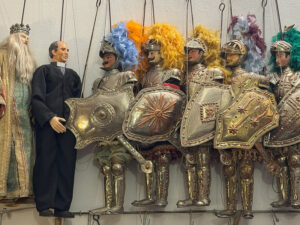
Leaked psychiatric report – Confidential draft
“Money is like manure. If you pile it up, it stinks. If you spread it around, things grow.”
— Attributed to various sane people throughout history
Contents
Abstract
Recent observations indicate a growing pandemic of Compulsive Capital Accumulation Disorder (CCAD) among the world’s wealthiest 1%.
Patients display a pathological need to hoard capital, avoid taxation, and justify their behavior with economic scripture.
Untreated, the disorder leads to mass inequality, civic decay, and occasional yacht enlargement.
1. Diagnostic Criteria
A. Persistent hoarding of wealth
Despite already owning multiple houses, the patient continues to purchase investment properties “for the portfolio.”
B. Magical thinking
Belief that wealth “trickles down,” even when evidence shows it evaporates in the Cayman Islands.
C. Social delusion
Perception of poverty as a personal failing rather than a structural outcome of one’s own policies.
D. Reality distortion
Refers to tax minimization as “efficiency” and philanthropy as “brand management.”
E. Emotional detachment
Displays flat affect when exposed to footage of working-class families struggling to buy groceries, yet weeps openly when the share price dips 2%.
2. Clinical Presentation
Symptoms typically begin in early adulthood following exposure to:
- Private school networks
- MBA programs
- Motivational speakers named “Chad” who say things like “Work smarter, not harder”
- Early access to leveraged equity and political donations
As the disorder progresses, patients exhibit compulsive behaviors such as:
- Refreshing the ASX or Dow Jones every 15 seconds
- Naming their yachts “Tax Haven” or “Liquid Asset”
- Lobbying governments while claiming to hate government
3. Differential Diagnosis
| Disorder | Key Difference |
|---|---|
| Obsessive-Compulsive Disorder | Sufferers check locks. CCAD patients own the locksmiths. |
| Narcissistic Personality Disorder | Narcissists crave admiration. CCAD patients buy media outlets. |
| Delusional Disorder (Grandiose Type) | CCAD patients believe markets are moral entities that reward goodness. |
4. Treatment Protocols
A. Reality Therapy (RT)
Expose patient to an average grocery bill. Encourage them to live on $52k per year for one fiscal quarter.
B. Antipsychotic Regimen
Recommend Paliperidone Portfolio-Release 10mg — helps reduce auditory hallucinations such as “the invisible hand.”
C. Community Service Rehabilitation
Mandatory 2,000 hours cleaning public parks and teaching underprivileged kids about the difference between cash and credit.
D. Empathy Restoration Therapy (ERT)
Repeated viewing of Ken Loach films until the patient experiences spontaneous compassion.
5. Prognosis
- Mild CCAD: Recovery possible with therapy, taxation, and daily doses of gratitude.
- Chronic CCAD: Poor prognosis. Symptoms may escalate into political candidacy or founding a “philanthropic” foundation.
- Terminal CCAD: Subject builds a rocket and attempts to colonize Mars.
6. Public Health Recommendations
- Treat money hoarding as a mental health crisis, not a mark of genius.
- Redirect the global mental-health budget from over-medicating the poor to rehabilitating the rich.
- Re-introduce the Fat Tax Collector archetype (see: Hägar the Horrible) as a therapeutic symbol — the avenging angel of fiscal justice.
Closing Note
The tragedy of CCAD is not just the illness of the wealthy — it’s the collective delusion that their sickness is success.
While ordinary citizens are treated for anxiety and depression, the true psychosis sits in boardrooms, grinning through earnings calls.
Until we medicate greed itself, poverty will remain the symptom of someone else’s untreated disease.





